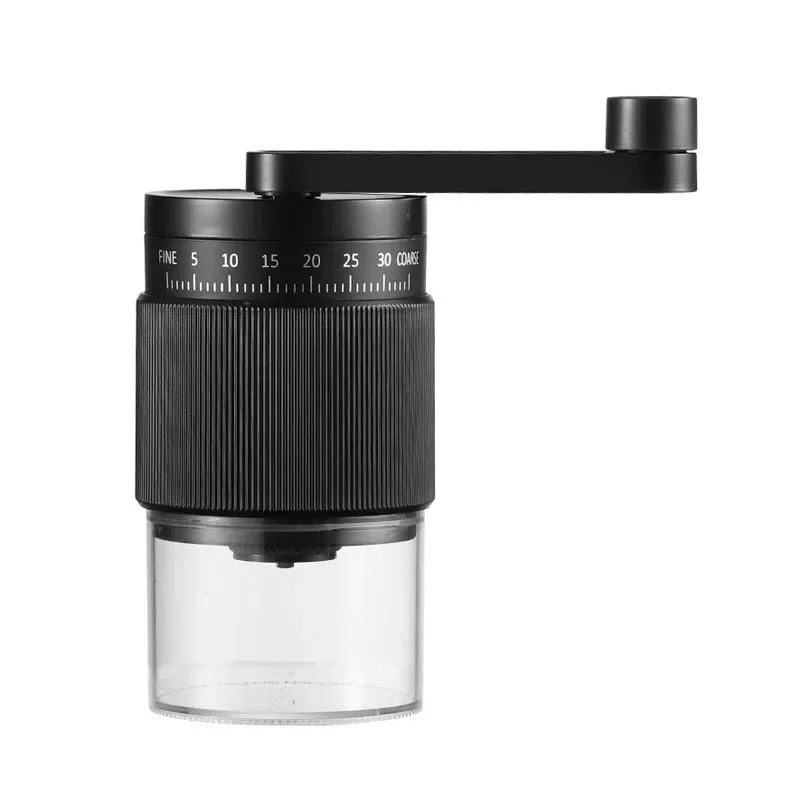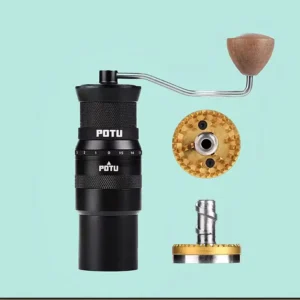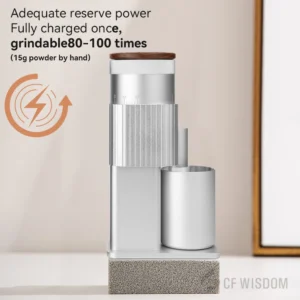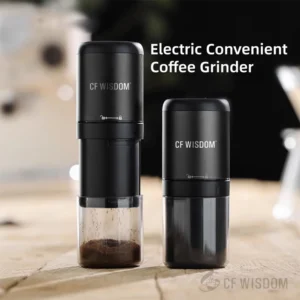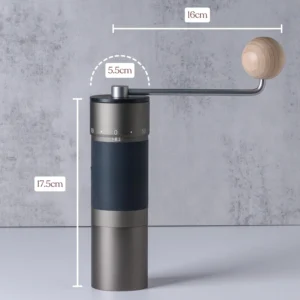The Critical Role of Grind Size in Espresso Perfection
When it comes to making exceptional espresso, no single factor has more impact on the final cup than your grind size. This seemingly small detail actually controls how water flows through your coffee and extracts flavors. Think of coffee grounds as the gatekeepers of flavor—when sized correctly, they create just enough resistance for water to extract the perfect balance of compounds.
The relationship between grind and extraction is remarkably sensitive. Adjust your grind size by even a fraction of a millimeter, and you can transform a sour, watery disappointment into a rich, balanced delight. This sensitivity makes grinding both challenging and rewarding for home baristas.
Water flows through coffee much like it flows through a filter. When ground too coarse, water rushes through too quickly, under-extracting and leaving behind desirable flavors. When ground too fine, water struggles to pass through, over-extracting and pulling out harsh bitter compounds. Perfect espresso exists in the sweet spot between these extremes—where fine-tuning espresso grind size becomes an art form worth mastering.
Understanding Perfect Espresso: Extraction Fundamentals
Before troubleshooting grind issues, you need to understand what makes a truly excellent espresso shot. The perfect espresso balances acidity, sweetness, and bitterness in harmony, offering complexity without harshness. This balance isn’t accidental—it’s the result of precision in what baristas call the “Espresso Trinity”:
- Dose: Typically 18-20g of coffee for a double shot
- Yield: Usually 36-40g of liquid espresso (a 1:2 brew ratio)
- Extraction Time: Ideally 25-30 seconds from first drip
These three factors work together, with the perfect espresso grind size serving as the primary control mechanism for extraction time. When properly executed, your espresso should flow like warm honey, with a rich, hazelnut-colored crema on top. The flavor should be complex but balanced—neither sharply acidic nor harshly bitter.
The Extraction Balancing Act
Espresso extraction is fundamentally about dissolving compounds from coffee grounds into water. These compounds include:
- Acids (bright, fruity flavors that extract quickly)
- Sugars (sweet, caramel notes that extract in the middle)
- Plant fibers and tannins (bitter compounds that extract last)
When your grind is perfect, water passes through at just the right speed to collect the ideal amount of each compound. Too coarse, and you mainly get acids without enough sweetness. Too fine, and you extract too many bitter compounds that overwhelm everything else. Definitive guide espresso grind size flavor relationships show that small adjustments can dramatically shift this balance.
Key Variables Beyond Grind Size
While grind size is critical, several other factors work together to create the perfect extraction:
- Bean Freshness: Coffee reaches peak flavor 7-14 days after roasting and then gradually degrades
- Tamping Pressure: Aim for firm (about 30 pounds of pressure) and perfectly level
- Water Temperature: Ideally 195-205°F (90-96°C)
- Distribution: Even coffee bed prevents “channeling” (water finding easy paths through the puck)
- Pressure: Standard machines operate at 9 bars, though some allow adjustment
When troubleshooting, remember that these variables interact with your grind setting. For example, a properly distributed coffee bed may allow for a slightly finer grind without choking the machine, as described in guides about how coffee grind affects pressure flow dynamics.
Diagnosing Your Espresso Problems: Identifying Grind Issues
Successful troubleshooting starts with careful observation. Rather than randomly adjusting your grinder, take a methodical approach:
- Observe the flow rate and timing of your shot
- Note the color and texture of the crema
- Taste carefully, identifying whether the shot tastes sour, balanced, or bitter
- Examine the spent puck for signs of uneven extraction
By isolating these variables, you can determine whether grind size is truly your issue. The goal is to establish a clear connection between what you’re experiencing and what’s causing it. Once you understand the symptoms, you can apply the appropriate solution with confidence, using knowledge about perfect espresso grind texture to guide your adjustments.
Signs Your Grind is Too Coarse: Under-Extraction Problems
When your espresso grind is too coarse, water flows through the coffee puck too quickly with these telltale signs:
- Shot Timing: Extraction completes in less than 20 seconds
- Flow Appearance: Coffee flows freely, sometimes described as “gushing”
- Color: Lighter than expected, possibly with blonde streaks
- Crema: Thin, pale, large bubbles that dissipate quickly
- Taste Profile: Sharply acidic, sour, lemony, or tart
- Mouthfeel: Watery, thin, lacking richness
- Spent Puck: Soft, falls apart easily, sometimes muddy in the center
When you experience these symptoms, your coffee hasn’t had enough contact time with water. The quick flow means the water has only extracted the most readily available compounds—mainly acids—while leaving behind the sugars and balanced compounds that create depth of flavor.
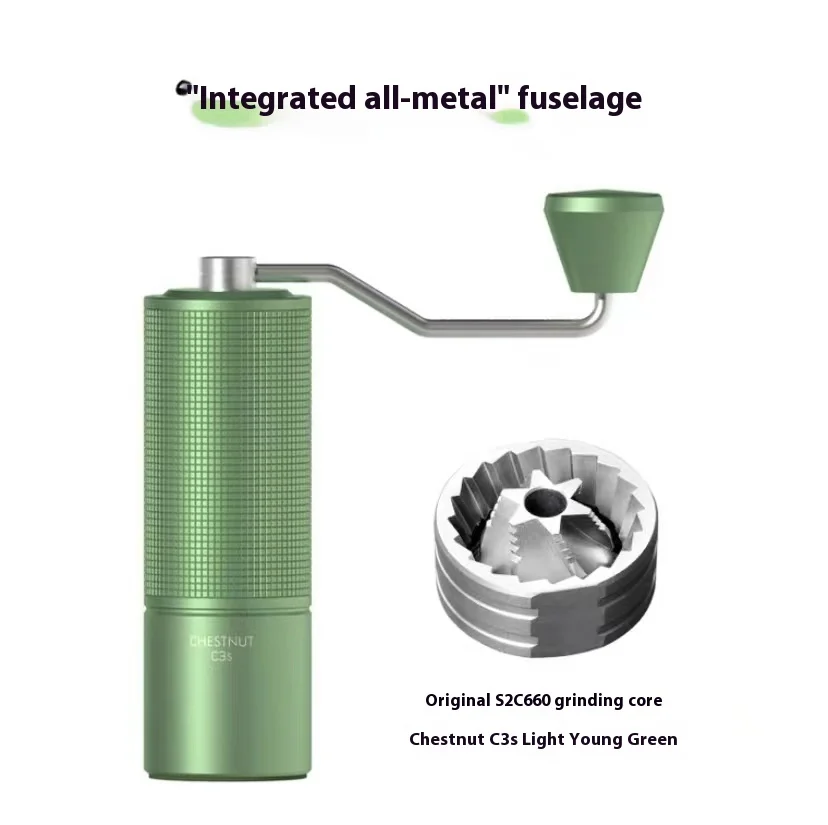
Signs Your Grind is Too Fine: Over-Extraction Problems
Conversely, when your grind is too fine, water struggles to penetrate the coffee bed, leading to:
- Shot Timing: Extraction takes longer than 35 seconds, or the machine chokes and barely drips
- Flow Appearance: Extremely slow, dark drips rather than a steady stream
- Color: Very dark, sometimes almost black initial drops
- Crema: Dark brown, thin, or excessive tiger striping
- Taste Profile: Bitter, astringent, ashy, or burnt
- Mouthfeel: Can be thick but often has an unpleasant grittiness
- Spent Puck: Hard, compact “hockey puck,” sometimes with a glossy surface
These symptoms indicate that water has been in contact with the coffee for too long, extracting excessive bitter compounds. Many espresso enthusiasts find that fine-adjustment hand grinder options provide the precision needed to dial in the perfect grind size and avoid these over-extraction problems.
Interpreting the Coffee Puck After Brewing
The spent coffee puck offers valuable clues about your extraction:
- Even Surface: A properly extracted puck should have a relatively flat, uniform surface
- Small Holes or Cracks: Suggest channeling where water found paths of least resistance
- Soupy Center: Indicates potential under-extraction in the middle
- Dry Spots: Areas water didn’t penetrate, suggesting distribution problems
- Edge Channeling: Water flowing around rather than through the puck
While puck analysis isn’t definitive (a shot can taste good despite imperfect puck appearance), it provides supporting evidence for your diagnosis. Remember that a perfect puck should be relatively dry, firm but not rock-hard, and show even extraction throughout.
The Fix: Step-by-Step Grind Adjustment Solutions
When troubleshooting your espresso, a systematic approach yields the best results. Professional baristas don’t make random adjustments—they follow a methodical process:
- Make one change at a time
- Adjust in small increments
- Keep all other variables constant
- Record and track results
- Taste mindfully after each adjustment
This scientific approach allows you to isolate the impact of grind changes on your espresso. The goal isn’t just fixing a current problem but understanding the relationship between adjusting grind size espresso shot timing for future reference. This knowledge builds your intuition and skills over time.
Fixing Under-Extraction: When Your Grind Is Too Coarse
If your diagnosis indicates under-extraction, follow these steps:
- Adjust your grinder to a finer setting—move 1-2 clicks or notches finer on most grinders
- Maintain the same dose, distribution, and tamping technique
- Prepare a new shot and time it
- Look for increased resistance and a slower flow
- Aim for a shot time closer to 25-30 seconds
- Taste for reduced acidity and improved sweetness
The ideal adjustment should be small but meaningful. With high-quality manual coffee grinder for espresso models, you can make precise micro-adjustments that commercial grinders might lack. If your shot still runs too fast, repeat the process with another small adjustment finer.
Fixing Over-Extraction: When Your Grind Is Too Fine
For over-extraction problems, reverse the approach:
- Adjust your grinder to a coarser setting—move 1-2 clicks or notches coarser
- Keep your dose, distribution, and tamping consistent
- Prepare a new shot and time it
- Watch for faster flow that doesn’t stall or drip slowly
- Aim for shot time closer to 25-30 seconds
- Taste for decreased bitterness and improved clarity
Each adjustment should move you closer to the sweet spot. If your shot still pulls too slowly, continue adjusting coarser in small increments. The goal is finding the point where extraction is neither rushed nor prolonged.
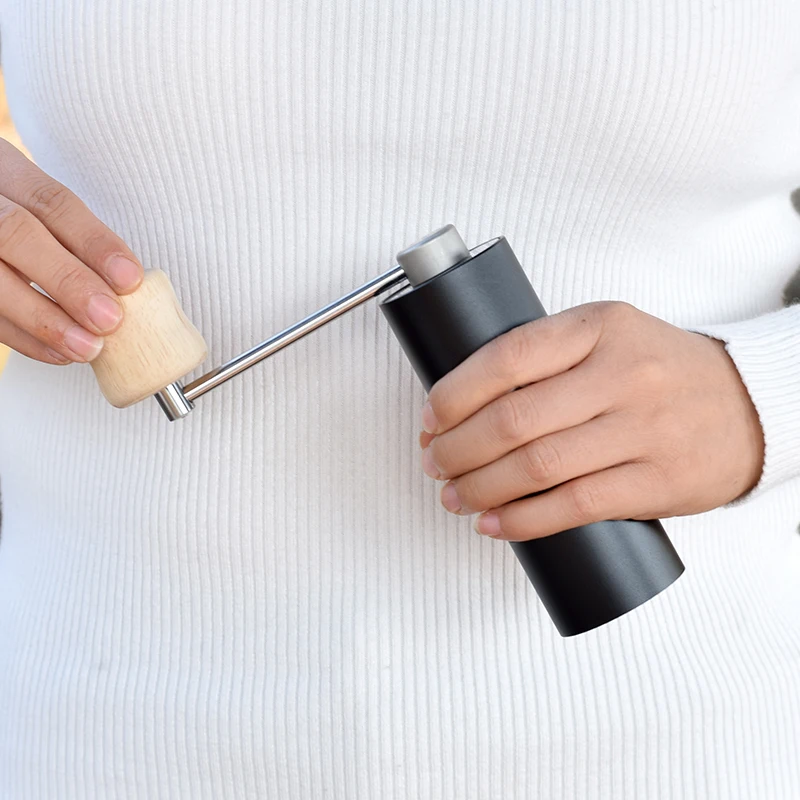
The “Dialing In” Process: A Systematic Approach
Dialing in is the process professionals use to find the optimal grind setting for a specific coffee. Here’s a complete approach:
- Start with a baseline setting: Begin with your grinder at a middle espresso setting
- Pull a diagnostic shot: Time it and evaluate extraction
- Make an informed adjustment: Go finer for faster shots, coarser for slower ones
- Repeat until timing is correct: Aim for 25-30 seconds
- Fine-tune based on taste: Even when timing is correct, taste might indicate further adjustments
- Lock in the setting: Once you’ve found the sweet spot, note the grinder setting
This methodical approach works well even when troubleshooting issues like espresso grind clumpy causes solutions, which can complicate extraction. Remember that each coffee may require a slightly different grind setting—what works perfectly for one bean may need adjustment for another.
Beyond Grind Size: Related Factors That Impact Extraction
While grind size is fundamental to espresso quality, it works within a system of variables. Sometimes, what appears to be a grind issue might actually be caused by or complicated by other factors. Understanding these related variables helps you develop a more holistic approach to troubleshooting.
Even with a precision manual grinder, factors like bean freshness, water quality, and machine maintenance can dramatically affect your results. Recognizing these influences helps prevent the frustration of continually adjusting your grind without addressing the real culprit.
Bean Factors: Freshness, Roast Level, and Origin
Your coffee beans themselves significantly impact extraction requirements:
- Freshness: Very fresh beans (1-7 days off roast) contain more CO2, creating resistance and requiring a slightly coarser grind
- Age: Older beans (beyond 3 weeks) become drier and more brittle, often requiring a finer grind
- Roast Level: Dark roasts are more brittle and extract more easily, generally needing a coarser grind
- Light Roasts: Denser and harder, typically requiring a finer grind to extract properly
- Origin and Processing: Different growing regions and processing methods create beans with varying density and solubility
Understanding these relationships helps explain why the same grinder setting doesn’t work for all coffees. Many enthusiasts explore detailed resources about espresso grind size light dark roasts to master these nuances.
Distribution and Tamping: Preventing Channeling
Even with perfect grind size, poor distribution can ruin extraction:
- Distribution: Coffee should be evenly spread in the portafilter before tamping
- WDT Method: Using a thin needle or tool to break clumps and distribute grounds
- Tamping Pressure: Consistent pressure (around 30 pounds) applied perfectly level
- Common Problems: Side channeling from grounds clinging to portafilter walls, center channeling from uneven distribution
Good distribution ensures water contacts all coffee particles evenly, rather than finding “channels” of least resistance. Many espresso enthusiasts find that high-quality manual espresso grinder options produce fewer clumps and more consistent grounds, making distribution easier.
Fine Adjustment Hand Grinder, Precision Manual Grinder, Travel Coffee Grinder
Price range: $185.11 through $494.63 Select options This product has multiple variants. The options may be chosen on the product pageHand Burr Grinder, Hand Crank Coffee Grinder, Manual Espresso Grinder, Portable Coffee Grinder
Price range: $262.72 through $300.22 Select options This product has multiple variants. The options may be chosen on the product pageHand Burr Grinder, Manual Coffee Grinder Stainless Steel, Precision Manual Grinder
Price range: $183.64 through $187.52 Select options This product has multiple variants. The options may be chosen on the product pageManual Coffee Grinder Stainless Steel, Manual Espresso Grinder, Travel Coffee Grinder
Price range: $276.22 through $276.39 Select options This product has multiple variants. The options may be chosen on the product pageHand Crank Coffee Grinder, Manual Coffee Grinder for Espresso, Manual Coffee Grinder Stainless Steel
$349.15 Select options This product has multiple variants. The options may be chosen on the product page
Quick Troubleshooting Reference Guide
| Problem | Symptoms | Likely Cause | Solution |
|---|---|---|---|
| Shot too fast (15-20 seconds) | Watery, sour taste Thin body Pale crema | Grind too coarse | Adjust grinder finer Check for fresh beans Increase dose slightly if needed |
| Shot too slow (35+ seconds) | Bitter, harsh taste Dark, spotty crema Drips rather than flows | Grind too fine | Adjust grinder coarser Ensure even distribution Check for proper dosing |
| Channeling | Uneven flow Spurting Sour and bitter flavors | Uneven distribution Improper tamping | Use WDT method Ensure level tamp Check for clumpy grounds |
| No crema | Flat appearance Thin body Weak flavor | Very stale beans Grind too coarse | Use fresher beans Grind finer Check water temperature |
| Excessive crema that quickly dissipates | Foamy rather than creamy Bitter aftertaste | Very fresh beans Possible grind too fine | Allow beans to rest longer Grind slightly coarser |
Maintaining Your Grinder for Consistent Results
A well-maintained grinder is essential for consistent espresso quality. Over time, coffee oils build up inside grinders, and burrs naturally wear down, both affecting grind consistency. Follow these maintenance guidelines:
- Daily: Brush out loose grounds from the burr chamber
- Weekly: Use grinder cleaning pellets to remove oil buildup
- Monthly: Deep clean by disassembling and cleaning burrs (follow manufacturer instructions)
- Every Use: Purge a small amount of coffee when changing grind settings
Signs that your grinder needs attention include increased noise, inconsistent grind size, or coffee getting stuck in the burrs. Quality espresso coffee hand grinders are often easier to maintain than electric models, as they can be disassembled more completely for cleaning.
Remember that burrs do wear out over time. For home use, ceramic burrs typically last 3-5 years, while steel burrs may last 5-10 years depending on usage. When you notice decreasing consistency or difficulty achieving fine espresso grinds, it might be time for replacement burrs.
Advanced Techniques: Fine-Tuning for Perfection
Once you’ve mastered basic troubleshooting, these advanced techniques can help elevate your espresso:
Temperature Management:
Temperature fluctuations affect extraction dramatically. Many home machines benefit from “temperature surfing”—running hot water briefly before brewing to stabilize temperature. Some baristas pull shots at different temperatures for different roast levels.
Pre-Infusion:
A gentle pre-infusion (slowly wetting grounds at low pressure before full extraction) can improve consistency, especially with lighter roasts. This helps prevent channeling and allows for slightly finer grinds without choking the machine.
Pressure Profiling:
Advanced machines allow varying pressure during extraction—starting low, ramping up, then decreasing. This can extract different compounds at different stages, adding complexity to your shot.
Grind Distribution Techniques:
Beyond basic WDT, techniques like “Ross Droplet Technique” (adding a drop of water to beans before grinding) or “paper clip distribution” can further improve extraction evenness.
When Should You Consider Equipment Upgrades?
Sometimes persistent espresso problems point to equipment limitations rather than technique issues. Consider these questions:
Q: How do I know if my grinder is holding me back?
A: If you’ve mastered technique but still get inconsistent results, or if you cannot grind fine enough for proper extraction, your grinder may be the limiting factor.
Q: Are stepped grinders suitable for espresso?
A: Stepped grinders often have too large intervals between settings for perfect espresso adjustment. Stepless grinders or those with micro-adjustments provide better control.
Q: Does burr size and type matter?
A: Yes—larger burrs generally provide more consistency, while conical versus flat burrs offer different flavor profiles. For espresso, burr quality matters more than size.
Q: Is my machine capable of proper pressure?
A: Entry-level machines sometimes cannot maintain the ideal 9 bars of pressure, resulting in under-extraction regardless of grind size.
Is Your Current Grinder Capable of Espresso-Quality Grinding?
A truly espresso-capable grinder should have:
- Fine Adjustment Control: Ability to make tiny incremental changes
- Consistency: Produces uniform particle size without excessive fines
- Appropriate Burr Design: Quality burrs specifically designed for espresso
- Stability: Maintains settings without drifting during grinding
- Range: Can grind fine enough without choking or stalling
Many budget blade grinders and even some entry-level burr grinders cannot meet these requirements. If your grinder lacks these features, consistent espresso results will remain elusive regardless of technique.
Manual vs. Electric Grinders for Espresso
Manual grinders offer several advantages for espresso enthusiasts:
Advantages of Quality Manual Grinders:
* Often more affordable than electric grinders of comparable quality
* Generally produce less static and fewer clumps
* Typically more precise adjustment mechanisms
* Easier to maintain and clean thoroughly
* Portable for travel
Limitations:
* Requires physical effort, especially for espresso fineness
* May have smaller capacity, requiring multiple grinding sessions
* Can be slower for preparing multiple shots
At Savor Suite, we’ve found that high-quality manual grinders can match or exceed the performance of electric grinders costing twice as much. The direct control and precision adjustment of premium manual grinders make them ideal for home espresso enthusiasts seeking quality without breaking the bank.
Common Questions About Espresso Grinding
Q: Can I use my regular coffee grinder for espresso?
A: Only if it’s a burr grinder capable of very fine, consistent grinding with precise adjustment. Most standard coffee grinders cannot grind fine enough or with sufficient consistency for proper espresso.
Q: How do I know if my grind size is correct without expensive equipment?
A: Focus on shot timing (25-30 seconds), flow consistency, and most importantly, taste. A balanced flavor without pronounced sourness or bitterness indicates proper extraction.
Q: How often should I adjust my grinder during the day?
A: Environmental factors like humidity and temperature can affect grinding, so professional baristas often make small adjustments throughout the day. At home, you might need to adjust slightly between morning and afternoon sessions.
Q: Why does my grinder produce clumpy grounds?
A: Static electricity, humidity, oily beans, and grinder design all contribute to clumping. Using a distribution tool to break up clumps before tamping helps ensure even extraction.
Q: Do different brewing methods require drastically different grinds?
A: Yes—espresso requires the finest grind, while French press uses the coarsest. Pour-over, AeroPress, and drip methods fall in between. The extraction time of each method determines the optimal grind size.
By understanding the critical relationship between grind size and extraction, and approaching troubleshooting methodically, you can diagnose and solve most espresso problems. Remember that perfect espresso results from patience, precision, and consistent practice—qualities that make the journey as rewarding as the perfect shot itself.

